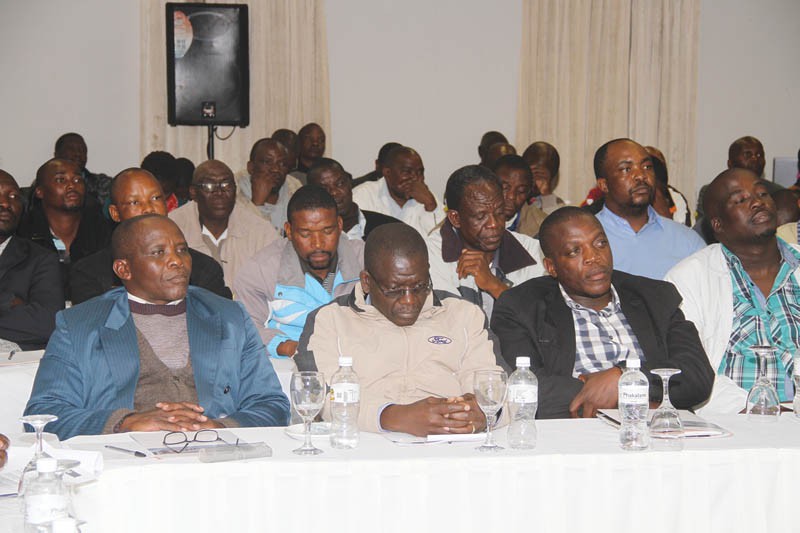Tempers flare at public transport meeting
Baboki Kayawe | Friday June 26, 2015 16:22


As public transport increasingly becomes a nightmare in the capital, characterised by congestion and daunting delays, the Ministry of Transport and Communications has engaged an international advisory urban transport consultancy firm - CPCS, in a vigorous exercise to address the problem.
A consultative workshop convened by the ministry to share ideas on strategies to improve the public transport systems of the Greater Gaborone Area, revealed a total of 200,000 trips are made daily between the city and surrounding areas. Despite the consultancy’s optimism, a dark cloud of uncertainty and skepticism engulfed the many operators who convened in Phakalane.
CPCS senior consultant, Amos Ditima, reiterated lack of integration between urban planning, transport planning and land use planning saying it is an eyesore to Gaborone’s public transport sector.
He said an ongoing study, Implementation of an Improved Metropolitan Public Transport System for the Greater Gaborone Area has found that of the over 400, 000 vehicle population nationwide, over 50 percent of these are in the city.
“There are 200, 000 daily trips between Gaborone and surrounding towns and villages, 97 percent of these are within Gaborone,” said Ditima.
The vehicle composition of these daily trips reveals that 86 percent are through light vehicles, with cars taking up a sizeable 60 percent, while vans constitutes 26 percent and taxis made up one percent of the traffic.
Buses, on the other hand, made up a mere eight percent, while minibuses composed of the small percentage and no large buses recorded in this daily traffic mix. Adding into the poor integration in planning, Ditima said the study found the city’s public transport system sub-optimal, as it does not deliver an organised system. Though the city council provides and maintains the necessary infrastructure, he said the sector is burdened by unregulated informal free market system of minibus and taxi operators providing uncoordinated and poor quality service.
Currently, existing operators operate mostly as individuals except for long distance buses, which are represented by an association. Moreover, he said the permit system is inadequate for economic regulation, and over-supply of permits in the market.
CPCS therefore says there is a need to restructure existing institutions, open up the transport markets to the private sector, corporatise ministry and commercialise publicly owned transport bodies.
“A central feature of regulation is to support the market and to control abuse of monopoly power. There are four major options: administered public monopoly, regulated private monopoly, unregulated market, and regulated competition,” Ditima said.
He added that it is important for the success of the new system to take on board those operators who are currently offering public transport services, however, in a more organised manner, with the necessary training and infrastructure provided.
“The new system will only be considered to be successful if it delivers the required outcomes which are; faster journey times, significant modal shift from cars to public transport, reduced congestion, less waiting time, and easier through movements,” he opined.
To this end, members of the Gaborone Taxi Association have been on a benchmarking exercise in George in South Africa, where the municipality is said to have succeeded in enhancing the public transport efficiency through merging independent operators into one company.
The chairperson of the association, Gopolang Tlhomelang, is optimistic that with government subsidies the same model can achieve results in Gaborone. “George has a population of 150 thousand, and we are 100 thousand more than they are. I believe if our permits are to be valued and shareholding is determined based on the value of the permits like they did, and all existing employees in the sector are incorporated in the new entity, then we can have a success model as well,” he said.
The workshop was attended by road transport operators, academicians, and government officials to promote the system, which is widely accepted as the fundamental component to contain road traffic congestion, environmental pollution and other externalities of transport.
